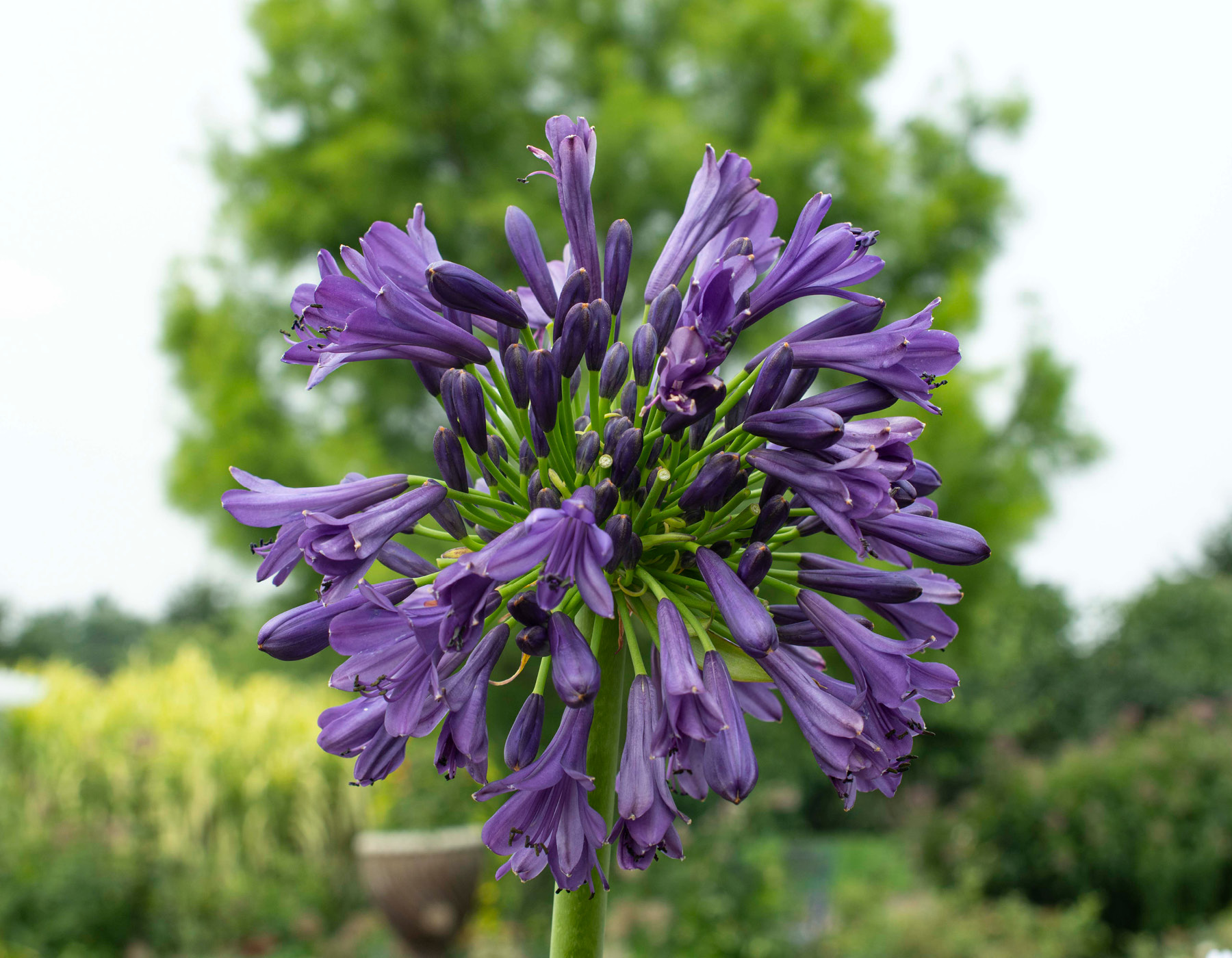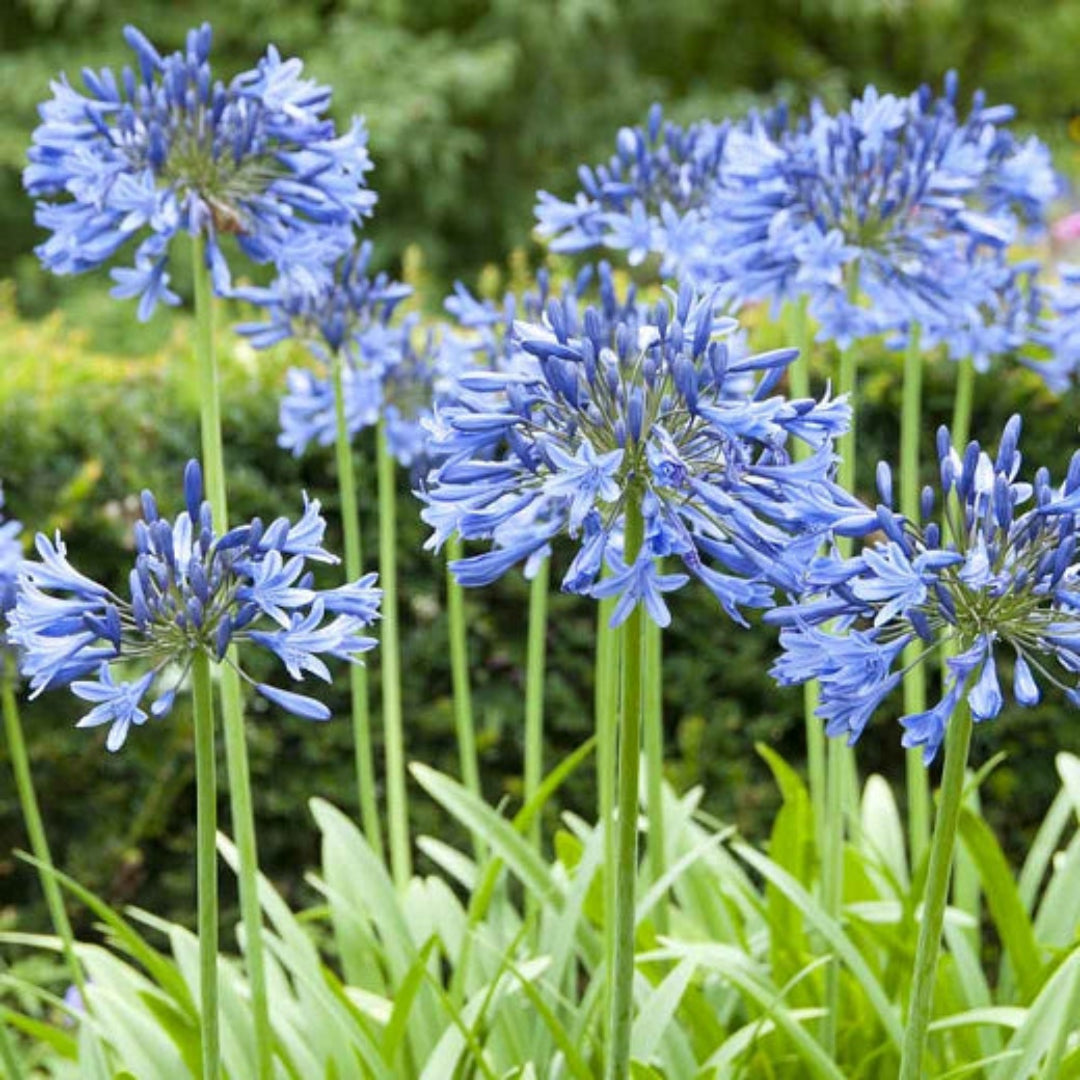Agapanthus Varieties: Choosing the Best for Your Landscape
Agapanthus Varieties: Choosing the Best for Your Landscape
Blog Article
Mastering the Art of Agapanthus Treatment: Important Steps for Healthy Development and Vibrant Flowers
In the realm of cultivation, the cultivation of agapanthus stands as a gratifying venture for those who look for to support these stylish flowering plants. With their striking blooms and stylish foliage, agapanthus has recorded the focus of garden enthusiasts worldwide. Nevertheless, accomplishing optimal growth and lively blossoms needs a nuanced technique that encompasses various essential steps. From selecting the best variety to mastering pruning strategies, the journey in the direction of growing prospering agapanthus plants is complex and holds the crucial to unlocking the full potential of these botanical gems.

Picking the Right Agapanthus Variety

When picking the appropriate Agapanthus selection for your garden, consider elements such as climate suitability, flower shade, and growth habit. In addition, think about the environment in your area to make sure the Agapanthus range you pick can flourish in your details problems. Comprehending the development behavior of various Agapanthus ranges is important for proper placement within your garden.
Ideal Growing Conditions
Taking into consideration the optimum ecological demands is important for successful Agapanthus cultivation. Agapanthus thrives in well-draining dirt with a somewhat acidic to neutral pH degree. When growing, select an area that receives full sunlight to partial shade. In hotter climates, supplying some mid-day shade can stop scorching of the leaves. Agapanthus plants are sensitive to chilly temperatures and should be safeguarded from frost throughout winter season.
To ensure healthy development and lively blossoms, plant Agapanthus bulbs at a deepness of concerning 2-4 inches and area them 8-12 inches apart. Mulching around the base of the plants aids keep wetness and reduces weed growth.
Watering and Fertilizing Tips
Keeping appropriate wetness levels and giving necessary nutrients are crucial elements in the treatment program for Agapanthus plants. When it comes to sprinkling Agapanthus, it is important to strike a balance. These plants prefer continually moist soil but are vulnerable to root rot if overwatered. Throughout the expanding season, water deeply once a week, ensuring the dirt is well-draining to prevent waterlogging. In hotter environments or throughout periods of dry spell, more constant watering may be required to maintain the dirt uniformly wet. However, minimize watering in the winter months to stop waterlogged problems.
Feeding Agapanthus is necessary for advertising healthy and balanced development and respected blooms. Apply a balanced fertilizer, such as a 10-10-10 formula, in the very early spring as new growth emerges. By following these watering and feeding pointers, you can guarantee your Agapanthus plants thrive and produce vivid, long-lasting blooms.
Trimming Techniques for Agapanthus
Pruning Agapanthus plants at the proper times and with appropriate strategies is crucial for preserving their health and wellness and promoting optimal growth and flowering. The suitable time to trim Agapanthus is in late wintertime or very early spring prior to brand-new development arises. Start by removing any kind of dead or yellowing fallen leaves near the base of the plant. Cut them as short as feasible without damaging the emerging shoots.
For flowered stems, wait up until the flowers have actually perished and after that cut them back to the base. This not just cleans the plant's appearance however likewise urges the growth of brand-new blossom buds. Deadheading invested blossoms can likewise reroute the plant's energy right into producing more flowers instead of establishing seeds. Nonetheless, if you desire to gather seeds for breeding, leave some flowers to official source dry and fully grown on the plant.
Keep in mind to use tidy, sharp devices to make exact cuts and decrease the threat of introducing illness. Agapanthus. Regular trimming will certainly aid keep your Agapanthus looking healthy and cool while making certain a bountiful screen of lovely flowers
Dealing With Usual Bugs and Diseases
After making certain correct pruning strategies for Agapanthus, it is necessary to resolve common insects and conditions that can impact the health and vitality of these plants. Agapanthus plants are usually hardy yet can still succumb particular issues. One typical parasite that affects Agapanthus is the Agapanthus gall midget. This small, orange fly lays its eggs in the foliage, bring about distorted development and flower buds that fall short to open. To fight this insect, trim and damage any type of damaged plant parts and take into consideration utilizing insecticidal soap.
Another usual issue is fungal fallen leave spot, which presents as dark sores on the fallen leaves. To stop fungal diseases, ensure great air circulation around the plants, avoid overhanging watering, and eliminate any type of infected fallen leaves quickly. Additionally, Agapanthus plants can struggle with root rot if they are grown in improperly draining pipes soil. To stop this, plant Agapanthus in well-draining dirt and prevent overwatering. By being alert and taking prompt action versus diseases and parasites, you can assist your Agapanthus plants flourish and generate dynamic blossoms.

Final Thought
In conclusion, mastering the art of agapanthus care involves choosing the ideal range, supplying ideal planting problems, important source correct watering and fertilizing, suitable pruning techniques, and attending to typical bugs and conditions. By following these essential actions, you can make certain healthy development and vivid blossoms for your agapanthus plants. Keep in mind to consistently monitor and keep your plants to advertise their general wellness and longevity.
To make sure healthy and balanced development and vibrant blooms, plant Agapanthus light bulbs at a deepness of regarding 2-4 inches and area them 8-12 inches apart. By adhering to these watering and feeding ideas, you can ensure your Agapanthus plants prosper and generate dynamic, long-lasting blossoms.
One common bug that influences Agapanthus is the Agapanthus gall find this midge. In addition, Agapanthus plants can experience from origin rot if they are planted in improperly draining pipes dirt. By complying with these necessary steps, you can make sure healthy and balanced development and dynamic blooms for your agapanthus plants.
Report this page